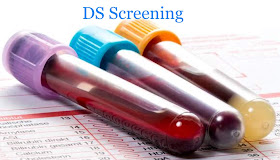TOG Article: Evolution in screening for Down syndrome
Volume 21, Issue 1 January 2019
This article discusses different methods evolved over time for screening of Down Syndrome with some details for latest cell-free DNA testing.
To download original article (free access): Evolution DS Screening
Introduction
- The most common reason for invasive testing is to diagnose chromosomal aneuploidies
- Only done for high risk pregnancies as there is associated risk of miscarriage
- Down’s syndrome (DS) is the result of an extra chromosome 21
- Critical factors in screening test are detection rate and false positive rates (FPR)
- Detection rate: ability of a test to give a positive result for those who have the disease
- Screen-positive rate: proportion of affected and unaffected persons having a positive result
- FPR: unaffected proportion yielding a positive result
Screening by maternal age
- Screening for DS introduced in 1970s.
- Women aged 40 years or more considered high risk, but it was not possible to offer diagnostic tests to entire population

